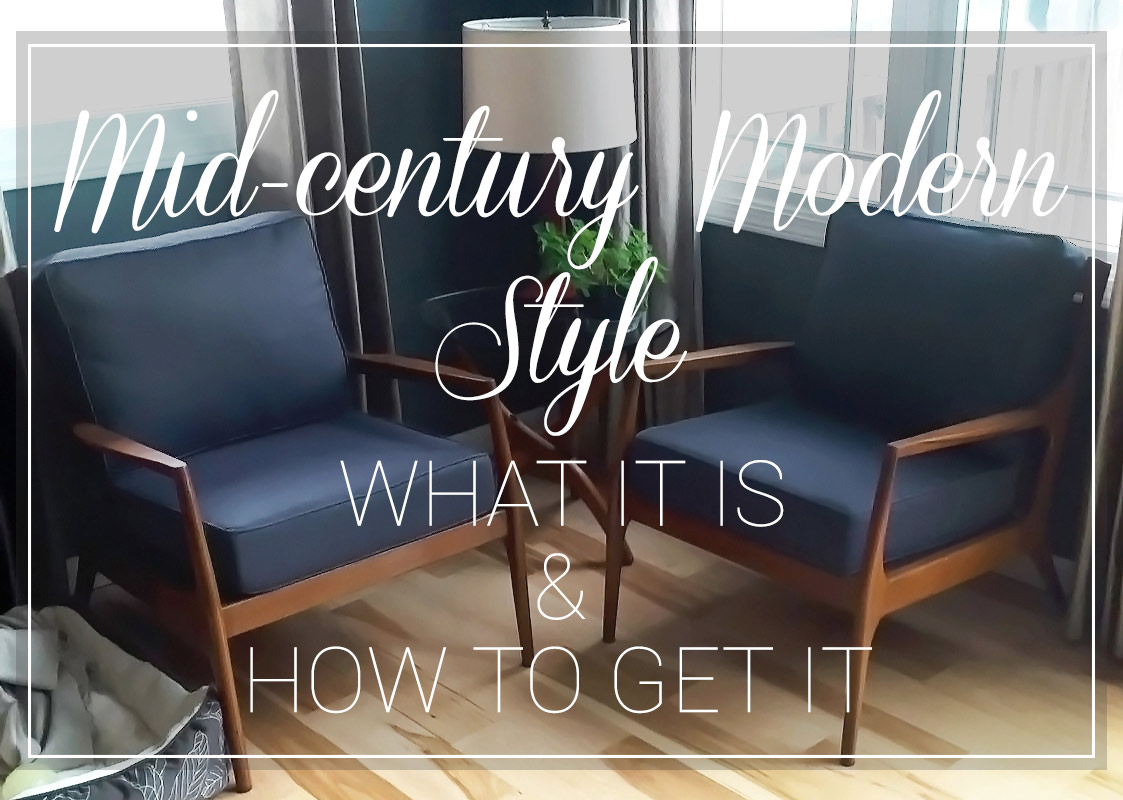
What is Mid-Century Modern Style?
Mid-century modern architecture and design began as a response to the baby boom after World War II. This rise in population after the war resulted in an increase in Consumerism. Previous manufacturing practices were becoming cumbersome and obsolete. Families were growing and people needed homes and home furnishings. The Mid-century modern movement was a welcomed answer to the expanding population.
Influenced by Bauhaus and International Style architecture, the Mid-century modern movement concentrated on the form and functionality of spaces and structures, moving away from the heaviness and elaboration of previous design movements. While Mid-century architects and industrial designers aimed for cutting edge concepts, their main focus was function. Mid-century designs were familiar and user-friendly, constructed with the average person in mind. Mid-century architects and designers also drew inspiration from nature, creating organic lines and open spaces that blended with natural surroundings. Using innovative materials, designs were quickly and easily manufactured.
Mid-century modern style has regained popularity once again and for good reason. Although it could be argued that Mid-century style has become cliché, many Mid-century designs have become classics. To establish lasting Mid-century style in your home, it is important to be certain of the finished look you want to achieve. This will help you decide on the Mid-century pieces needed for your room. When selecting the best Mid-century furniture or décor for your space, opt for designs with staying power rather than going for what’s trendy. Look for versatile pieces that can be easily transferred into other décor schemes should your taste change.
How to Get Mid-Century Modern Style
Add Mid-Century Chairs
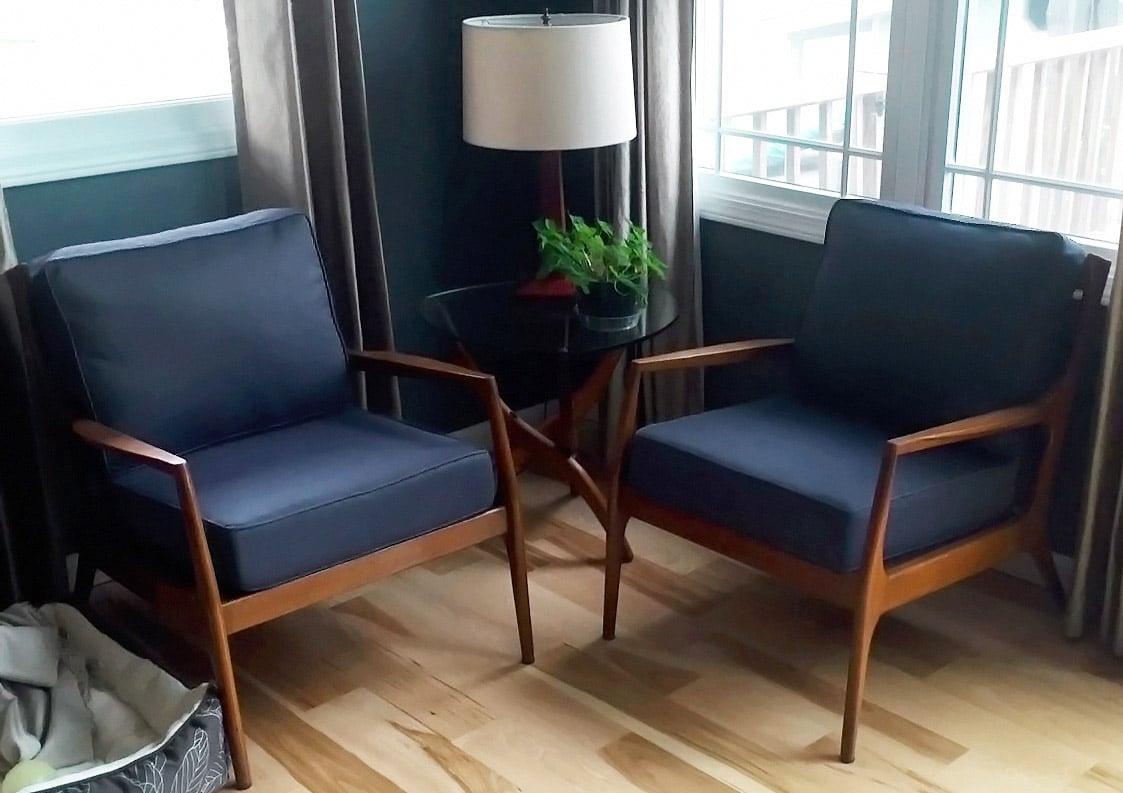
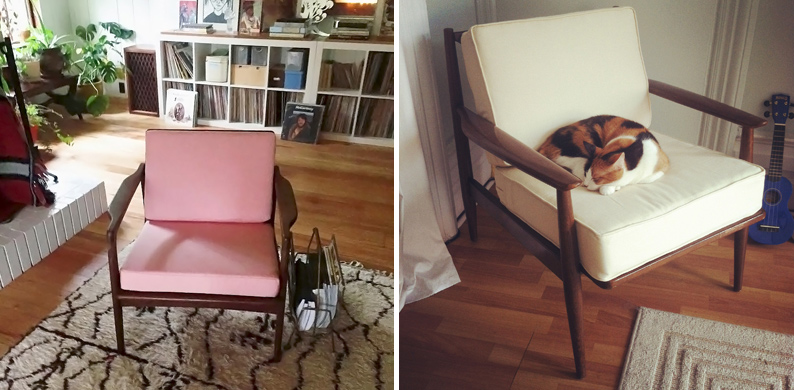
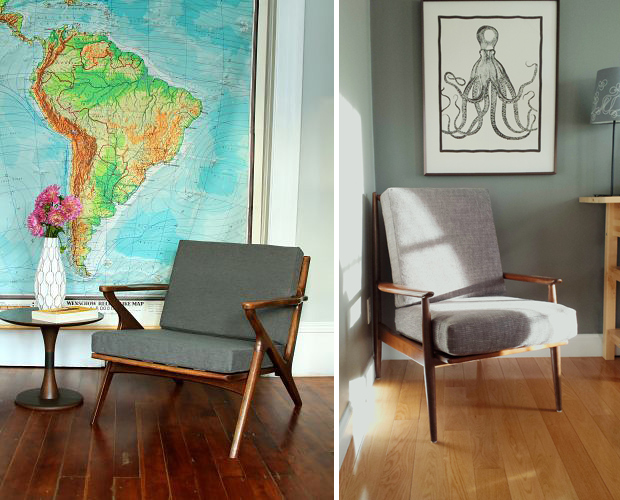
One way to add Mid-century style inside your home is with a Danish Modern chair. Look for designs inspired by the Hans Wegner GE-270 chair or the Poul Jensen Selig Z chair. These quality wood pieces feature beautiful lines and signature tapered legs that are complemented by thick, comfortable cushions. Coming across originals at thrift stores and flea markets is very rewarding, but sometimes these vintage finds have torn or stained cushions or no cushions at all. Don’t let this discourage you because it’s easy to replace Mid-century modern chair cushions. All you need to do is measure the length and width of your chair seat and back. Then, determine the cushion thickness needed. Once that is decided, subtract the thickness of the seat cushion from the back height.
Featured Cushions:
- PARA` Tempotest Sand Chambray Chair Cushions
- PARA` Tempotest Home Canvas Pink Chair Cushions
- Robert Allen Success Natural Chair Cushions
- Sunbrella Heritage Granite Chair Cushions
- Robert Allen Bark Weave BK Truffle Chair Cushions
Construct a Mid-Century Conversation Pit
Another idea for establishing Mid-Century style is by constructing a conversation pit. Conversation pits, or sunken living rooms, became popular in the 1950s and remained that way until the 1980s. However, due to the recent revival of Mid-century modern décor, conversation pits have been making a slight comeback. These rooms were often used in Mid-century homes to enhance the sleek look of interiors by removing the disarray that furniture can sometimes create. Conversation pits also opened up living spaces even further by eliminating the need for defining rooms with walls. Sunken living rooms feature built-in seating with bench cushions along the perimeter of the pit. Mid-century conversation pits were typically furnished with coffee or martini tables while focal points consisted of televisions or fireplaces.
Decorate with Mid-Century Throw Pillows and Floor Cushions
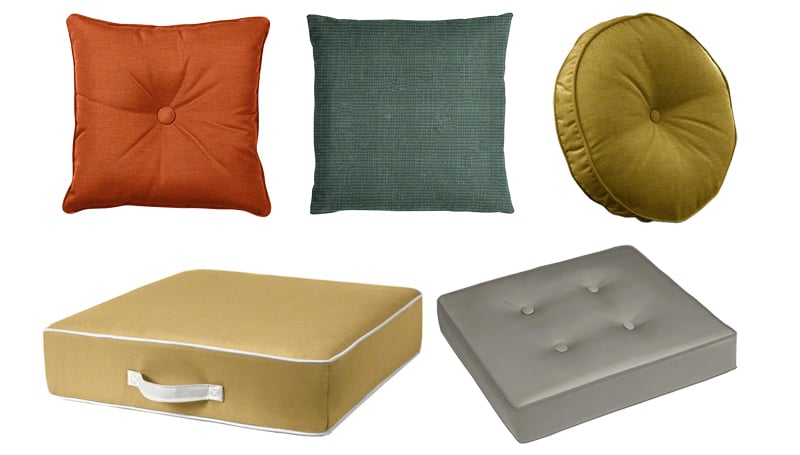
Throw pillows and floor cushions often accompanied Mid-Century furniture. Mid-century throw pillows and floor cushions were usually round or square, many times featuring button tufting. Floor cushions were mostly made from naugahyde or vinyl that could be used both indoors and outdoors.
Featured Pillows and Cushions:
- Highland Taylor Sea Dew Orange Custom Throw Pillow with Button
- Robert Allen Bark Weave BK Aegean Throw Pillow
- Highland Taylor Sea Dew Moss Custom Round Pillow with Button
- Americana Coffee Cream Vinyl Floor Cushion
- Americana Dove Vinyl Seat Cushion
Create a Sleek Outdoor Space with Mid-Century Outdoor Furniture and Landscaping
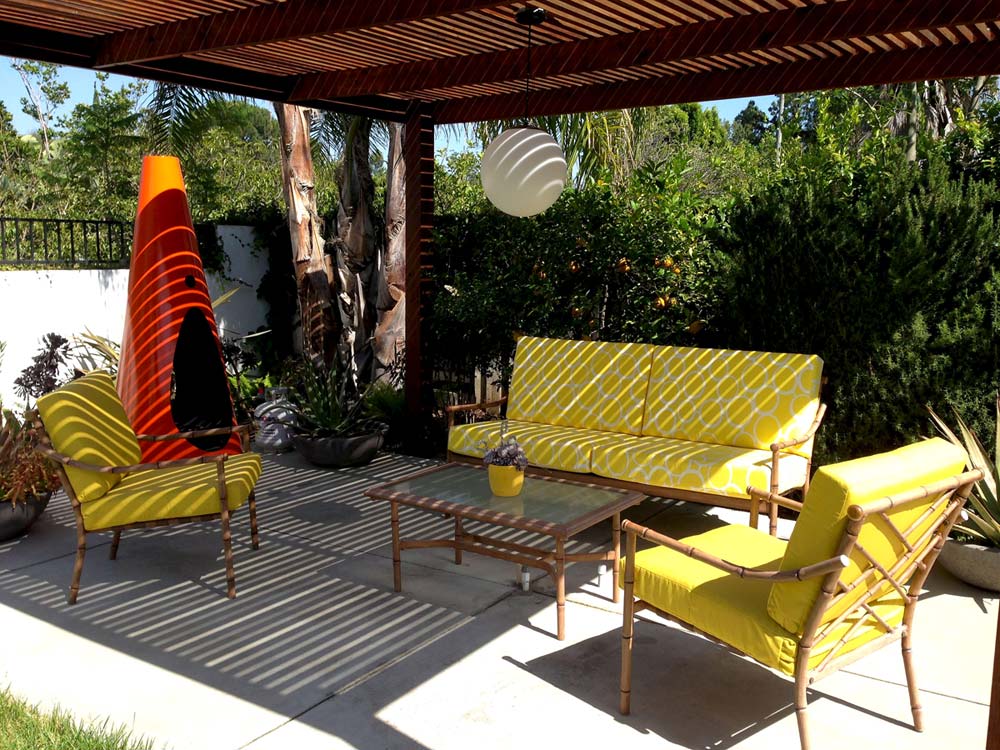
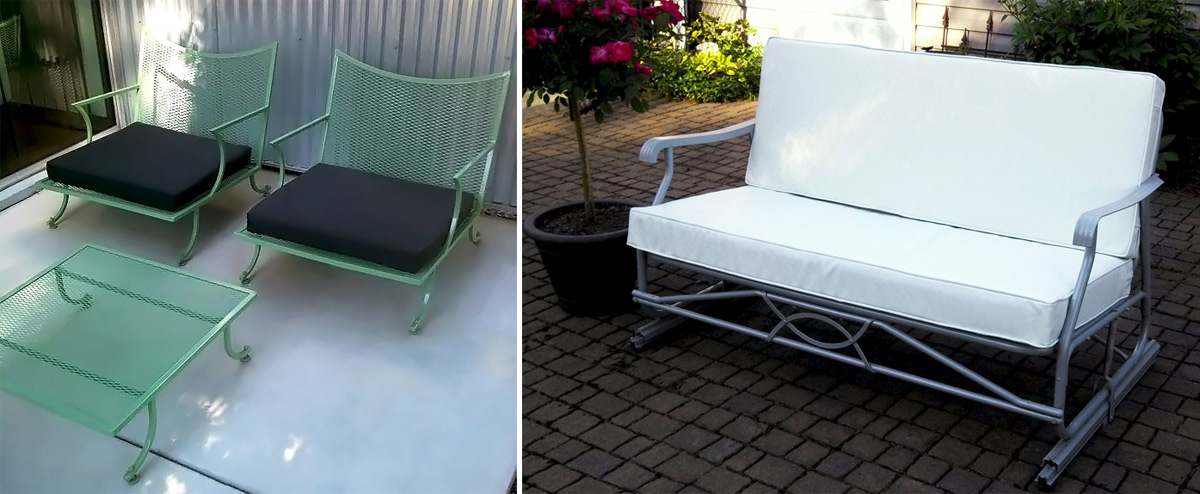
Understanding Mid-century outdoor furniture and landscaping is essential in taking the style outdoors. The typical Mid-century outdoor space was clean and simple, often seen as an extension of the home’s interior. Wrought iron and aluminum were the materials of choice for Mid-century patio furniture. Designs varied greatly, ranging from sculpted wire chairs to large steel gliders. Landscaping for the Mid-century modern home was kept to a minimum. Large concrete or stone pavers were often used for patio flooring and walkways. Because Mid-century homes were to blend with the natural surroundings, plants and shrubbery were sparse.
Featured Cushions:
Select Mid-Century Fabrics for Furniture and Decor
When updating or replacing Mid-century modern cushions and upholstery with fabrics similar to the originals, it’s good to keep a few things in mind. First, look for fabrics with a high number of double rubs. The higher the number of double rubs, the more durable the fabric. Next, to mimic the look and feel of original Mid-century furniture textiles, search for textured fabrics like bouclé or tweed. Vinyl is another fabric commonly used in Mid-century furniture upholstery. Last, decide on the fabric color best suited for your living space. Neutral Mid-century furniture is timeless and can be used in a variety of settings. However, if you prefer color, opt for similar fabrics in sky blue, red-orange, chartreuse, olive, forest green, yellow, and teal.
Go Bold with Mid-Century Geometric Patterns
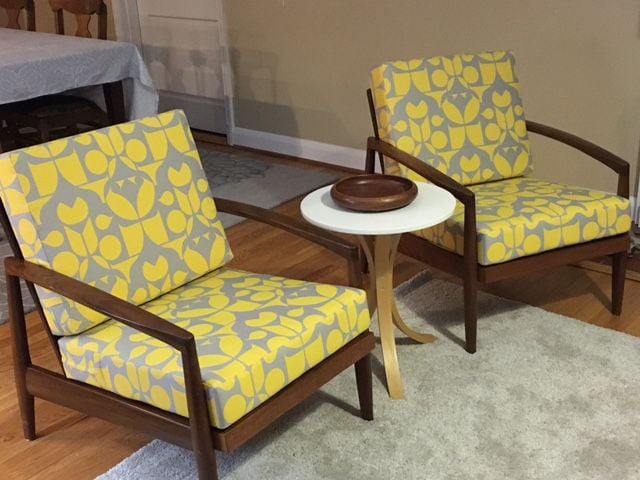
If you want to branch out from solid upholstery, geometric patterns work beautifully on Mid-century furniture as well. Look for simple, non-fussy fabrics. Fabrics with two colors usually work best because they typically have a cleaner appearance.
Featured Cushions:
By giving new life to vintage Mid-century design, you can easily add Mid-century style to your home. And although Mid-century modern design is not for everyone, it can definitely be viewed and appreciated as a classic. Sleek and functional is always in style.